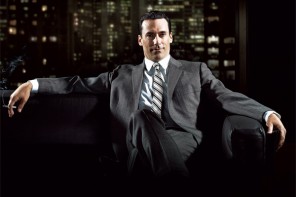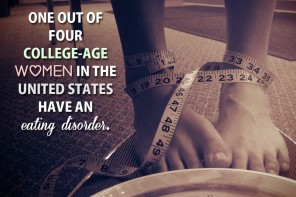When it comes to women and our reproductive systems, today’s culture tells us we’re living in a world of choice and freedom. But my experience tells me quite the opposite.
THE START OF A PAINFUL JOURNEY
It all started in 2006. I remember clearly the day, the month, the year, that my life would be permanently, irrevocably altered. After completing my Masters from a top conservatory, I had been happily working as a music professor and a professional soprano soloist, with the usual rounds of auditions and coachings – a balanced blend of performance and instruction. I was preparing for entrance auditions for doctoral programs in music, and enjoying a busy and fulfilling work and personal life.
One day that November, my journey with endometriosis began. If we knew more about this condition, I could probably say more. I could tell you when this really started, if it is hereditary or affected by other factors, and that there were many options for me. But I can’t. Instead all I can say is, suddenly, I had my life interrupted by an inexplicable constantly turning, twisting, and burning pain in my lower abdomen and back.
I scheduled an appointment with my OB/GYN as soon as possible. After an ultrasound which showed nothing unusual, she gave me an unofficial diagnosis. “It sounds like endometriosis” she said. “It’s a common condition, but you will need laparscopic surgery to formally diagnose it.” She handed me a prescription for YAZ, a hormonal contraceptive to help the symptoms, and sent me on my way.
Endometriosis. I went home and Googled the term. “A disorder where the endometrium grows outside of the uterus.” “Severe pain, infertility, internal adhesions, painful sex, vomiting, diarrhea, intermittent or constant symptoms.” This didn’t sound like a minor condition. The more I read, the more confused I became. One site said pregnancy could cure the condition, one said the “pregnancy cure” was a myth. One said birth control pills would cause the growths to shrink, another that pills would only mask the problem. There didn’t seem to be any reliable resource or definitive research. No comprehensive Internet list of specialists, although most sources cited it as a common condition, experienced by up to ten percent of women. Very confused, I scheduled an appointment for a second opinion. Followed by a third.
Several months later my symptoms had become a daily series of sharp and debilitating pains clustered in my pelvis and lower back. My latest doctor suggested diagnostic surgery, and I agreed. It confirmed I had moderate endometriosis—the endometrial lining which belonged inside my uterus, was instead growing all over the left side of my pelvis. By now, I had been accepted into a top doctoral program for Vocal Performance, despite auditioning in pain, and prayed this wouldn’t interfere.
To my distress, the surgery didn’t even make a dent in my pain. The YAZ pills made it duller—more like a collection of butter knives than molten hot skewers, but it was always there. If I missed a pill it came back with a force enough to make me see stars. After almost passing out several times, I learned not to forget that pill.
By the Fall, my rigorous classes provided a welcome distraction from the pain. Strangely, no one really seemed to notice. In the competitive world of classical music, I wasn’t about to tell many people. I managed to do well in my classes, and receive fine feedback on my voice. I did receive a few comments regarding a “reserved” performance style, no doubt connected to the moderate to severe pain I was experiencing constantly in the lower half of my torso.
At my checkup six months after surgery, I told my doctor that I was still in about 90 percent of the pain I had been in before the surgery. He quickly offered another “clean-out” surgery, treatment with various birth control pills (which I was already on), or with Lupron, a “menopause-inducing drug.” When I wasn’t enthusiastic about any of the above, he offered, with a cheerful smile, “or we could just have a hysterectomy and take it all out.
“But my understanding from my reading was that hysterectomy doesn’t always cure endo.”
“Well, most of the time it does.”
Most of the time. Not exactly compelling words when talking about a procedure that would end my ability to have children and induce menopause in my early thirties. Since the problem tissue was primarily located outside my uterus, I didn’t understand how uterine removal would fix the problem. I decided to continue my research.
WHEN DOCTORS HAVE NO ANSWERS
Doctor #4. Two years into the quest for treatment, my newest doctor greeted me with, “Well, you don’t appear to want to shoot your pelvis out with a shotgun, so you are probably better off than most.” I appreciated her honesty. “Endometriosis,” she said. “It won’t kill you, but it will make your life a living hell.”
Unfortunately, the options she gave me were the same as the first three physicians: “Birth control pills to feign pregnancy, Lupron to feign menopause, or another surgery, which I don’t recommend.”
“Why not?” I asked.
“Because, the chances are it will just grow back, and then you might have additional adhesions from the surgery, which we have no way of preventing. Many women just end up having multiple surgeries with little relief, so I would recommend holding off as long as you can.” She gave me a prescription for Tylenol with codeine, and sent me on my way.
Since none of this was solving my severe pain problem, I researched Lupron. Disturbingly, many women spoke of having negative side effects years after taking it, including vocal side effects. Despite my telling all of my doctors about my vocal profession, no one had mentioned this. When I mentioned Lupron to my voice teacher, she told me how one of her prior students who was prescribed this drug had her voice altered permanently. Her vocal career was ended. I was yet again thankful I did my own research, and horrified at the lack of information being shared with patients.
Over the next few years, I saw several more doctors, all who discouraged surgery, had more exams and ultrasounds with no new results, and walked a smaller and smaller tightrope in terms of my diet. I cut out all dairy, most meat, all wheat, most sugar, and caffeine. I drank my requisite eight cups of water every day. I began taking every vitamin recommended—B12, fish, oil, magnesium, selenium, a multi-vitamin, even tried recommended spices in capsules like cayenne and turmeric, lining them up day after day. I walked and swam when I could. I felt much better in every other way, much healthier—clear skin, lush hair, but still no pain relief. Over-the-counter painkillers did nothing, so I tried everything else, heat patches, daily “sitzbaths,” massage, alternative therapies. I was in my early thirties but I felt like an old woman, spending hours a day tending to my health.
Reports started to come out that Yaz had increasingly dangerous, including fatal side-effects, so I went on another pill.. Since over the counter medications weren’t working, and some also had intolerable side effects, I got prescriptions for other painkillers. None of them even touched the pain. It spread, month after month, year after year, until I could see a time looming where I could no longer function at all, caught in a constant miasma of agony.
My condition took a toll on my relationships as well. When I told people about it, aside from a few close family and friends, they were unsympathetic.
Several indicated my suffering must be due to weight gain or a self-care problem. Others suggested it was psychosomatic. Even a couple of close friends chastised me for talking about “period problems”—all this, despite my emphasizing that a) I no longer had a period due to years of hormonal suppression, and b) I was still in serious pain EVERY day, not just a few days out of the month. Gradually I learned to keep my struggles to myself.
COUNTLESS WOMEN SUFFER IN SILENCE
In the course of pouring over endless pages on the Internet looking for some, any relief, I saw hundreds, thousands of stories just like mine. Women who were putting on a brave face, attempting to work, tend to husbands and children (for those with endo who were lucky enough to have kids) meanwhile struggling privately with torturous symptoms.
Finally, on New Year’s Eve of 2012, at a point of desperation, I made a bold decision. I would have specialized excision surgery. My online research showed it had helped many women, even though all of my doctors had recommended against surgery. The problem is, there was no excision surgery specialist located in my area of Washington DC (odd that a disease which affects close to 10 percent of women did not have one specialist in our nation’s capital). The surgery and travel would likely cost thousands of dollars, but I felt I had no choice. I chose the number one specialist in Oregon, and traveled on my spring break.
When this doctor looked over my case, he said I was “lucky.” The majority of the women he saw had had five, ten, fifteen ineffective surgeries. He confirmed that hysterectomy would not cure endometriosis, despite several doctors having offered it to me. He thought he could help me and provide me significant relief. After I booked all my flights, surgery, and recovery lodgings, I discontinued the birth control pill one month before the surgery because the doctor had said he would need to see the endometriosis unmedicated. Since even missing one pill for years had put me into horrendous pain, it didn’t surprise me that I soon was up to four-five Vicodin a day and still in a barely functioning level of pain. But I had hope. The surgery was getting closer.
I cannot begin to describe what happened next. One week before travel to Oregon for the surgery I got a call from the specialist’s nurse. The doctor ran into an “administrative impasse” with the hospital and my surgery was cancelled indefinitively. All my preparations were wasted with one phone call.
To his credit, the doctor reimbursed my travel and lodging costs promptly. But I was devastated and in horrendous pain. Seeing no other way out, I called my second choice of doctor, who I hadn’t met, at the Center for Endometriosis Care in Atlanta. Amazingly, after reviewing my records, he took me and agreed to schedule a full exam and surgery the following week. I booked flights and lodging for myself and my mother as my necessary companion, all along thanking God for my ability and resources to do so, unlike so many others suffering from this disease.
FORGING AHEAD AND FINDING RELIEF
As soon as I arrived at Dr. Ken Sinervo’s office in Atlanta, I knew I had finally found the right place. The atmosphere was calming, aesthetically beautiful, with every couch and chair cushioned deeply for the comfort of women in severe pain. The doctor was calm, understanding, attentive, thoughtful—and every member of his staff was the same. He asked respectfully if I would like him to pray with me before my surgery, and as a Catholic Christian I greatly appreciated this.
As soon as I awoke from my surgery I felt tremendous relief. Throughout my stay in Atlanta, the staff commented on how easily I was able to get up and walk around immediately so soon after surgery. None of the post-surgical pain, even one day after surgery, even came close to the pain I had experienced every day for six years.
The surgery also revealed dramatic findings. My left ovary was pulled down and densely adhered to my pelvic wall and had to be removed. My bowel was adhered to my uterus and had to be detached and stitched. Endo completely covered the left side of my pelvis. My uterosacral ligaments were pulled out of place and adhered to my uterus. My appendix was scarred down and had to be removed as well. All this was still categorized as moderate endometriosis.
This was the condition I had worked through, sung through, taught through, cried through, spent hours, days, weeks balled up on the couch for, and explained endlessly to others, the vast majority of whom (aside from my immediate family and close friends) offered nothing but dismissal, skepticism, and vague annoyance. Finally, six years after the pain began, nine doctors, two long-term hormonal medications, multiple painkiller prescriptions, 8,000 miles of air travel, thousands of dollars, staring into the specter of a permanent hell of disability and constant unending pain, finally, I woke up with relief.
My experience, I have learned, is typical. The average woman with endometriosis spends 9 years, and sees 7 or 8 doctors just get an accurate diagnosis, despite that it is a common, disabling, and internally disfiguring illness. Over those years, her internal anatomy, fertility, relationships, and ability to function are slowly being destroyed.
Excision surgery has drastically better results (as in 85 percent permanent remission versus 45-50 percent needing repeat surgery within one year with the traditional fulguration techniques.) But, as I experienced—most doctors do not refer women to endometriosis excision specialists. Perhaps this is because there are fewer than twenty nationwide, for a disease which affects over five million American women.
When I returned for my hometown checkup in DC, the last doctor I had seen, a woman, looked briefly at the pictures and report of my surgery, and said (no joke, this is verbatim): “So, you were a mess. And that’s done. Do you need birth control?” End of story.
The saga had ended. But now, finally out of the fog of pain, my questions were just beginning.
A FAILURE OF FEMINISM
What does it say about our culture when our medical establishment consistently ignores and belittles not only a severe and disabling illness in close to one in ten women, but actual visual evidence of highly destructive disease? When it distrusts women—highly educated, intelligent women—and relegates them, with disinterest bordering on contempt, to a lifetime of severe pain and disability, despite repeated attempts over decades for help?
Here’s what I think it says. It says women today, after all the feminist movements of the last 150 years, are still not valued as whole people. We have transferred the disdain formerly directed at women’s independent dreams and career aspirations toward our normally functioning female bodies. Our cyclic fertility, which should function well without disease or medication, is treated by our doctors and society, as our oppressor, something to be controlled, flatlined, and then ignored. Then, when something goes awry with our reproductive system, the emphasis of our medical establishment and our culture, is not that of healing, compassion, or holistic treatment, but of punishment and disdain. This treatment more resembles that given a machine which no longer does its work properly, rather than a suffering human being.
Many, many, women today are given unnecessary hysterectomy and left, still, with severe endometriosis pain external to the uterus. Others are literally and financially bled dry through endless repeat surgeries by unskilled doctors who, knowing these treatments are not effective in the long term, still take the money. Others are automatically prescribed birth control pills and drugs such as Lupron without warnings of side effects, or without thorough testing of these drugs for the condition prescribed. Countless real women are suffering and being disenfranchised of such priceless things as health and fertility, and I believe this is a failure of feminism.
We need change in these arenas, but we need it to come from a deeper place than just more research and types of treatments. It needs to come from an appreciation of woman as whole people—creatures with both brains and bodies that are designed to function a certain way, and that includes healthy cycles and fertility.
Instead, it seems, today women are encouraged to function in an increasingly compartmentalized, unnatural fashion. We are encouraged to use our brains to serve our corporate employers, our bodies as sexual objects, and our healthy fertility as something to medicate away—then we’re surprised when it frequently does not return as scheduled. Later, we are subjected to extremely expensive and demoralizing fertility treatments, which also frequently do not work and leave us barren. These options are heavily marketed to us as “choice,” but in fact, society is becoming more and more organized around ideas that, as quick fixes, are ultimately anti-woman. In my view, this is not feminism or choice; it is anti-feminism.
Being a whole, feminine woman with an intact mind and body shouldn’t be a radical act, but today it is. If my story tells me anything it is this: For those of us who wish for proper care and healing, our current culture leaves us no choice but to act loudly and boldly in our own best interests, which are too often being ignored by the medical establishment and society at large. We must join together to gain attention and awareness,as warriors for our own cause— the cause of health, peace, vitality, and wholeness as women.
Dr. Joy Marya Stevans is a professional singer and voice professor based in the Washington D.C. area. In 2014 she completed her Doctorate of Musical Arts from the University of Maryland, with the project “Im Volkston: The Central-Eastern-European folk influence on vocal art music from select Austro-Hungarian composers,” performing three recitals of songs set by Bartók, Kodály, Brahms, Dvořák, Janaček (sung in the original Hungarian, Czech, Slovak, and German). She looks forward to a life of continued thriving in performance and academia, and of helping other suffering women gain healing, wholeness, and respect for their true feminine nature.
Photo Credit: Fuschia Foot





